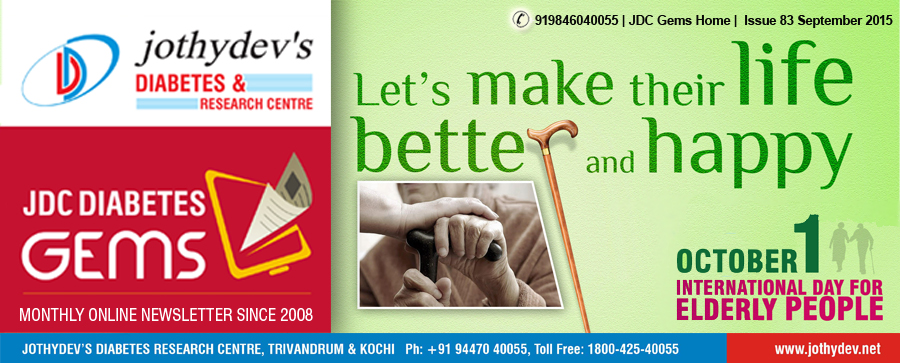
2. Diabetes + Fatty Liver increases liver complications risk

![]() According to a large prospective cohort study published online on July 14 in Hepatology, the combination of diabetes and non-alcoholic fatty liver disease increases the risk for liver fibrosis.
The prospective cohort study was conducted over two years in Rotterdam on 3,041 patients, 45 years or older. Abdominal ultrasounds were used to scan their livers and evaluate liver stiffness to characterize potential fibrosis. Further collections of blood, anthropometric measures, medical history, demographics, drug use, alcohol consumption, smoking history and comorbidities were evaluated.
According to a large prospective cohort study published online on July 14 in Hepatology, the combination of diabetes and non-alcoholic fatty liver disease increases the risk for liver fibrosis.
The prospective cohort study was conducted over two years in Rotterdam on 3,041 patients, 45 years or older. Abdominal ultrasounds were used to scan their livers and evaluate liver stiffness to characterize potential fibrosis. Further collections of blood, anthropometric measures, medical history, demographics, drug use, alcohol consumption, smoking history and comorbidities were evaluated.
![]() Just over one-third (35.5%) of the patients had the presence of fatty liver and 5.6% of the patients had a liver stiffness over 8 kPa or clinically relevant for liver fibrosis. Not surprisingly, having the presence of positive surface antigens for hepatitis B or C resulted in a five-fold increased chance in also having liver fibrosis.
Just over one-third (35.5%) of the patients had the presence of fatty liver and 5.6% of the patients had a liver stiffness over 8 kPa or clinically relevant for liver fibrosis. Not surprisingly, having the presence of positive surface antigens for hepatitis B or C resulted in a five-fold increased chance in also having liver fibrosis.
![]() More surprisingly, having both diabetes and a fatty liver also had a five-fold increased chance in also having liver fibrosis. This is among one of the first studies to measure the impact of diabetes and non-alcoholic fatty liver on further liver problems.
More surprisingly, having both diabetes and a fatty liver also had a five-fold increased chance in also having liver fibrosis. This is among one of the first studies to measure the impact of diabetes and non-alcoholic fatty liver on further liver problems.
![]() The odds of fibrosis doubled with each decade of age, going from an incidence of 1.4% in those aged 50 to 60 years, to 3.4% among those aged 60 to 70 years, to 5.5% among those aged 70 to 80 years, to 9.9% in those older than 80 years (odds ratio [OR], 2.40; 95% confidence interval [CI], 1.72 - 3.36; P< .001). In addition, 0.6% had a liver stiffness measurement greater than 13.0 kPa, indicating likely advanced fibrosis or cirrhosis.
The odds of fibrosis doubled with each decade of age, going from an incidence of 1.4% in those aged 50 to 60 years, to 3.4% among those aged 60 to 70 years, to 5.5% among those aged 70 to 80 years, to 9.9% in those older than 80 years (odds ratio [OR], 2.40; 95% confidence interval [CI], 1.72 - 3.36; P< .001). In addition, 0.6% had a liver stiffness measurement greater than 13.0 kPa, indicating likely advanced fibrosis or cirrhosis.
![]() The two largest risk factors for fibrosis were presence of hepatitis B or hepatitis C and combined presence of diabetes mellitus and steatosis. Odds for liver stiffness at least 8 kPa or higher were more than five times greater with hepatitis B surface antigen or anti–hepatitis C positivity (OR, 5.38; 95% CI, 1.60 - 18.0; P = .006) and for combined diabetes and non-alcoholic fatty liver disease (OR, 5.20; 95% CI, 3.01 - 8.98; P < .001 for combined presence).
The two largest risk factors for fibrosis were presence of hepatitis B or hepatitis C and combined presence of diabetes mellitus and steatosis. Odds for liver stiffness at least 8 kPa or higher were more than five times greater with hepatitis B surface antigen or anti–hepatitis C positivity (OR, 5.38; 95% CI, 1.60 - 18.0; P = .006) and for combined diabetes and non-alcoholic fatty liver disease (OR, 5.20; 95% CI, 3.01 - 8.98; P < .001 for combined presence).
For enquiries info@jothydev.net.
Please visit: jothydev.net | research.jothydev.com | diabscreenkerala.net | jothydev.com/newsletter
